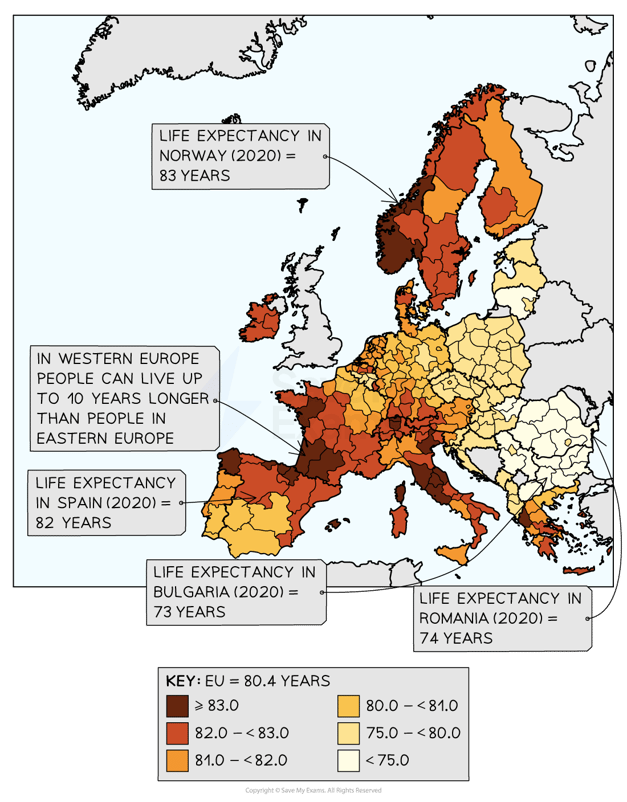Variations in Human Health & Life Expectancy in Developing Countries
Global life expectancy

Life expectancy (2021)
- Life expectancy shows large differences in health across the world
- The population of many of the richest countries in the world have life expectancies of over 80 years
- In the countries with the worst health, life expectancy is between 50 and 60 years
Health & Life Expectancy in Developing Countries
- Levels of life expectancy and health vary considerably from place to place in the developing world
- Factors which inhibit health and life expectancy in the developing world include:
- Poor healthcare
- A lower GDP per capita means countries struggle to invest in their healthcare e.g. vaccines, equipment, medical training
- People may have to travel a long way to access healthcare eg. to urban areas
- Food insecurity
- Malnutrition leaves a population more open to diseases
- Especially the vulnerable (young children, pregnant women)
- Poor access to clean water
- Waterborne diseases, such as cholera, are prevalent in developing countries
- Poor water quality is exacerbated by inadequate sanitation
- Poor healthcare
- Across Africa’s 54 nations, there are still big differences in:
- Life expectancy
- Levels of infant and maternal mortality
- Access to food
- A safe water supply
- The north African countries place better on the Human Development Index (HDI) than central African countries due to:
- A longer life expectancy
- A higher GDP per capita


